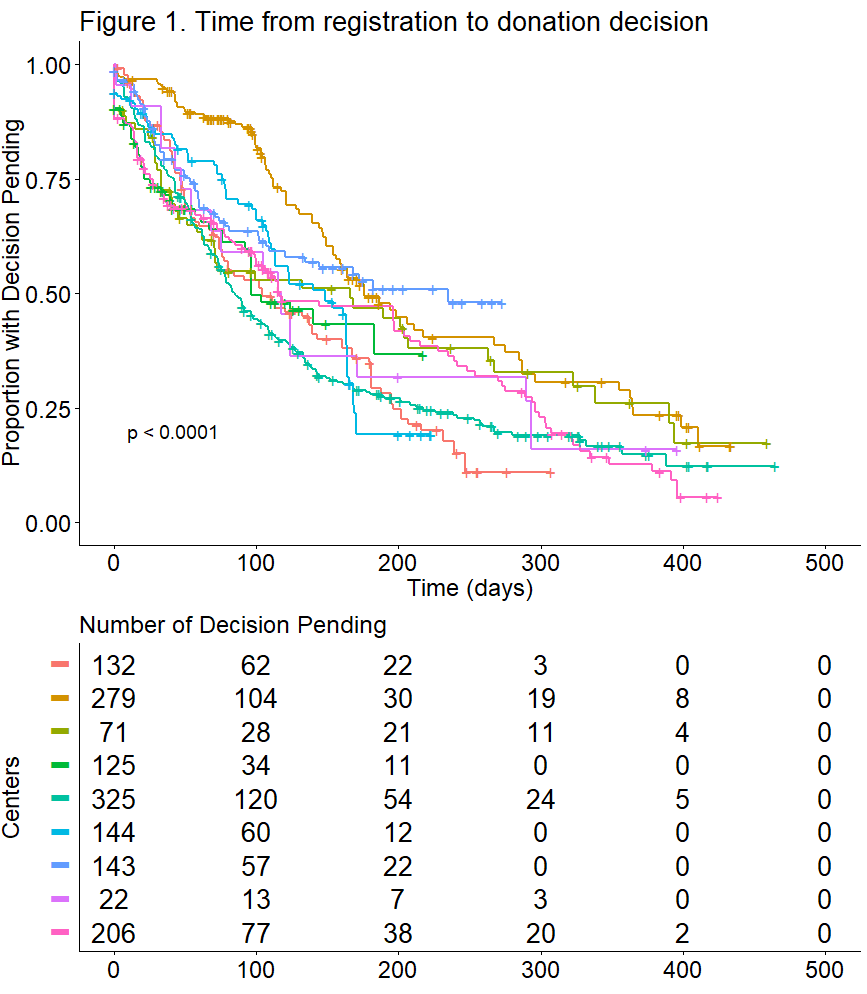The Living Donor Collective Pilot Evaluations of Living Kidney Donor Candidates at 10 Programs
SRTR, Minneapolis, MN
Meeting: 2020 American Transplant Congress
Abstract number: 355
Keywords: Donation, Patient education, Procurement, Survival
Session Information
Session Name: Kidney Living Donor: Long Term Outcomes
Session Type: Oral Abstract Session
Date: Saturday, May 30, 2020
Session Time: 3:15pm-4:45pm
 Presentation Time: 3:15pm-3:27pm
Presentation Time: 3:15pm-3:27pm
Location: Virtual
*Purpose: Much remains to learn regarding long-term effects of living organ donation on donors. Rare events are important, and long-term follow-up with appropriate contemporaneous controls is needed. SRTR, under contract with the Health Resources and Services Administration, is conducting a pilot program to establish a registry of living donor candidates, the Living Donor Collective (LDC).
*Methods: We invited 10 living kidney donor programs to participate in the LDC pilot phase. Donor candidates who come prescreened to the program for evaluation are registered with online or batch upload of data submitted to SRTR. After a maximum of 2 years, donation acceptance or reason(s) for not donating are submitted.
*Results: The first kidney donor candidates registered at the first pilot site in May 2018. By Sept 30, 2019, all 10 pilot LDC sites were operational, with a total of 1553 donor candidates: 1476/1553 (95.0%) completed registration; 785/1476 (53.2%) received a determination; and 385/785 (49.0%) were approved to donate. Across all sites, the median days from donor candidate registration to donation approval or decision not to donate was 132 (Fig. 1), with significant variation by program from a minimum of 85 to a maximum of 235 days, log rank P=0.0001. Of 400 donor candidates who did not donate, the most common donor-related reasons were hypertension, kidney stones, psychosocial stressors, obesity, low kidney function, multiple renal arteries, other unfavorable anatomic reasons, psychiatric illness, substance use disorder, proteinuria, and concern for developing diabetes; 25 (6%) did not donate because the donation became unnecessary for reasons related only to the intended recipient. The latter could serve as optimal controls for long-term follow-up studies.
*Conclusions: We conclude that establishing a registry of living kidney donor candidates is feasible. Reporting the outcomes of donor candidate evaluations to transplant programs, compared with other programs, may help programs better understand their candidate evaluation processes. Long-term follow-up of donors and donor candidates who did not donate may provide much needed information on important outcomes, and may facilitate the donation process in the future.
To cite this abstract in AMA style:
Kasiske B, Conboy M, Ahn Y, Israni A, Snyder J. The Living Donor Collective Pilot Evaluations of Living Kidney Donor Candidates at 10 Programs [abstract]. Am J Transplant. 2020; 20 (suppl 3). https://atcmeetingabstracts.com/abstract/the-living-donor-collective-pilot-evaluations-of-living-kidney-donor-candidates-at-10-programs/. Accessed January 6, 2026.« Back to 2020 American Transplant Congress

